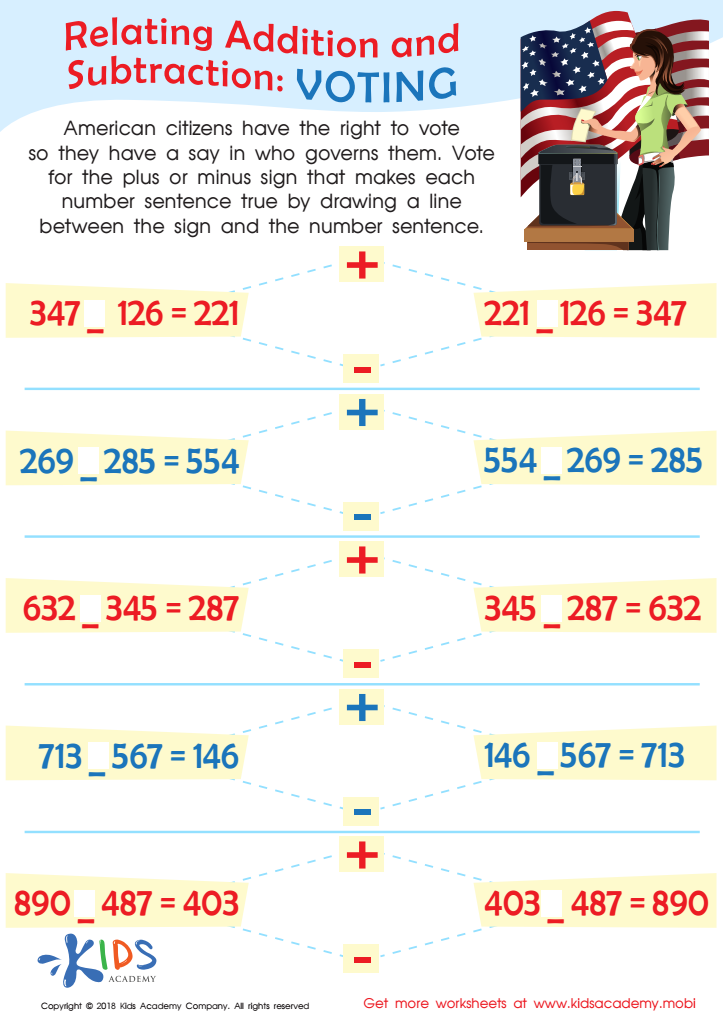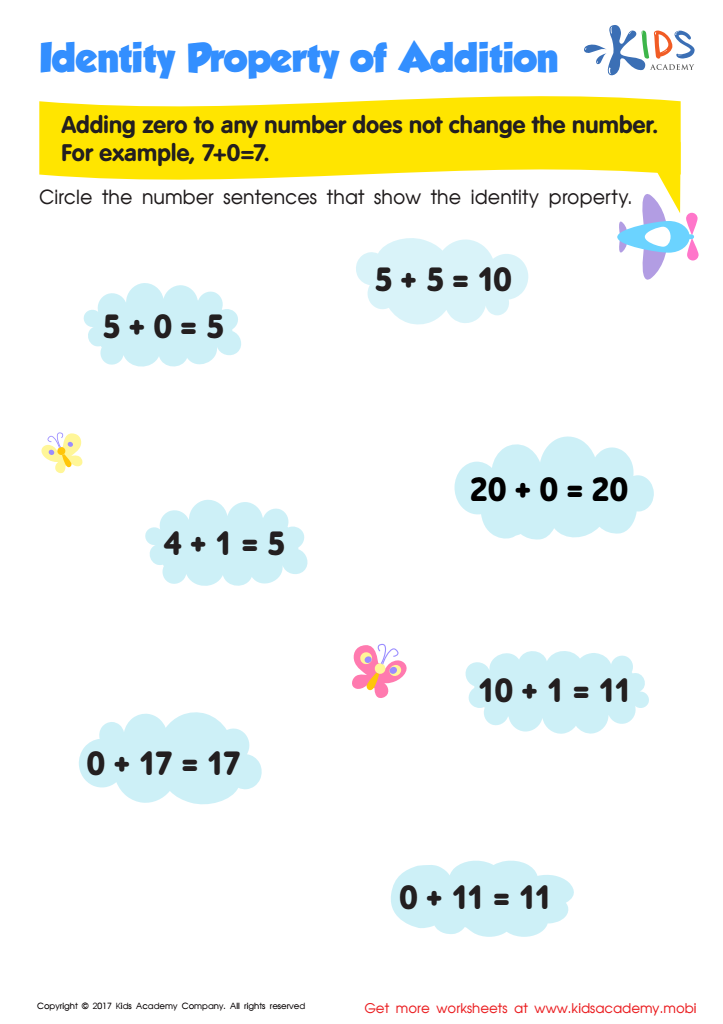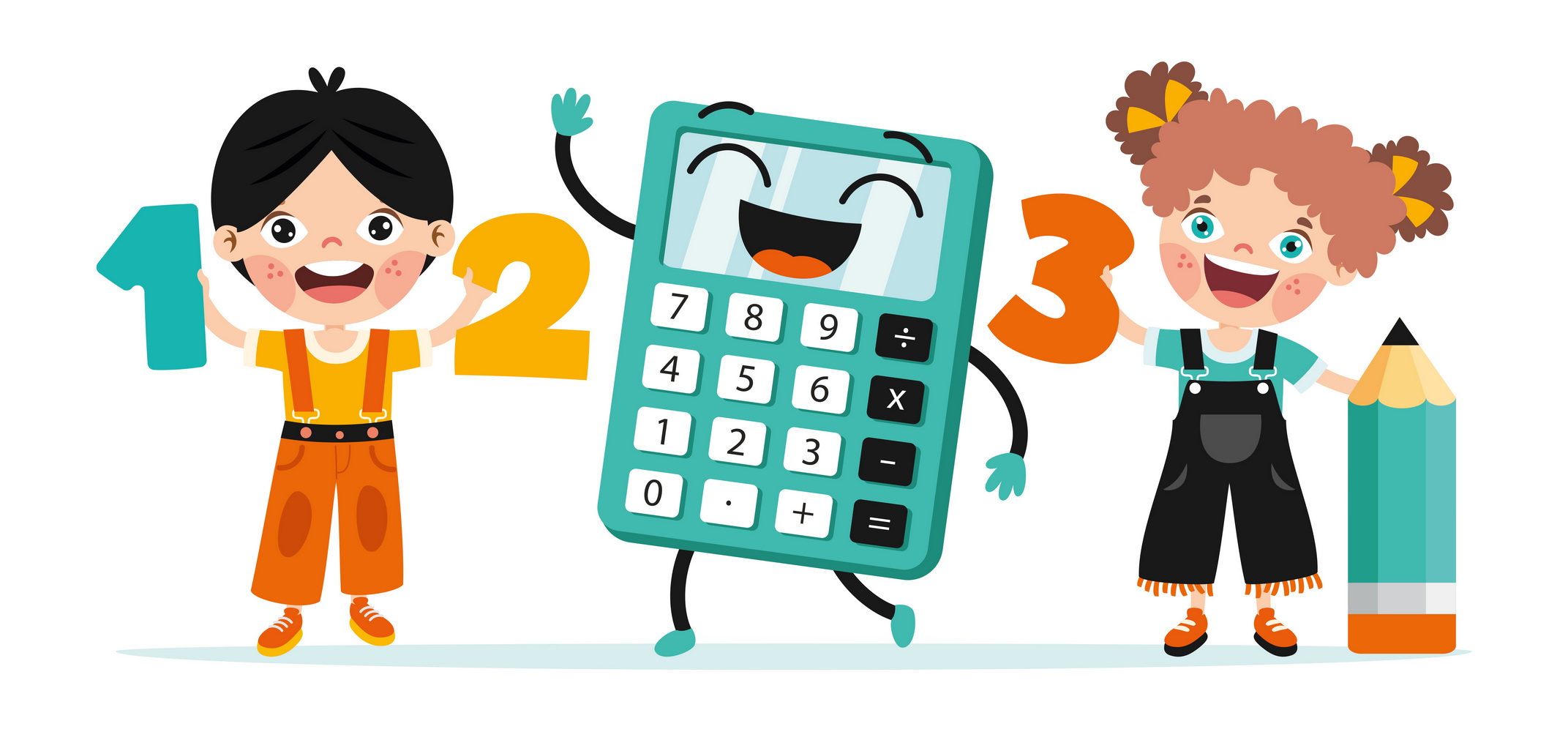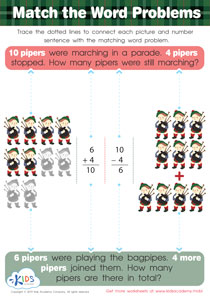Understanding addition Normal Addition Worksheets for Ages 6-9
3 filtered results
-
From - To
Unlock the key to math success with our "Understanding Addition Normal Addition Worksheets for Ages 6-9". Designed for young learners, these engaging worksheets make mastering addition a breeze. Through interactive exercises and colorful visuals, children will effortlessly develop essential math skills. Perfect for both classroom use and at-home practice, each worksheet builds a solid foundation in arithmetic. Watch your child’s confidence soar as they tackle simple sums and progressively advance to more challenging problems. Encourage a love for math and equip your child with the tools they need for future academic achievement. Start their math journey with us today!


Voting Worksheet


Identity Property of Addition Worksheet


Double Facts: Total Matching 2 Worksheet
Understanding addition at a young age (ages 6-9) is crucial for several developmental and educational reasons. Firstly, addition forms the foundation of all higher-level math skills. Grasping this basic concept early paves the way for mastering subtraction, multiplication, division, and more complex operations in later years. Early competency in addition boosts a child’s confidence in math, fostering a positive attitude towards the subject.
For parents, supporting their child's mastery in addition helps create a conducive environment where learning is valued. Parental involvement in education can massively reinforce what is taught in school, making abstract concepts more concrete through everyday examples, such as adding fruits at the grocery store.
Teachers aiming for a strong addition foundation can ensure their students develop critical problem-solving skills. Understanding the logic and patterns in addition aids in cognitive development, enhances memory, and builds persistence. Engaging teaching methods, like visual aids and practical activities, make learning addition enjoyable and accessible.
Ultimately, ensuring that children ages 6-9 understand and are comfortable with addition sets them up for academic success and helps them develop logical thinking and analytical skills crucial for their future learning journey. Encouraging a strong grasp in addition thus primes students for lifelong learning and everyday practical tasks.
 Assign to My Students
Assign to My Students







.jpg)








